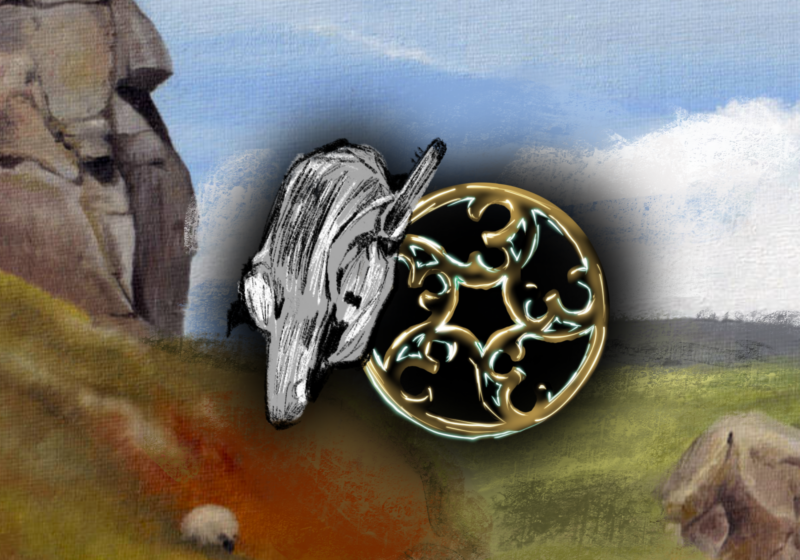A new exhibition by Annie Strader, ‘Something is Always Far Away,” began its month-long display at the Hartnett Gallery last Thursday. The exhibit transforms the entire room into a work of art with its interdisciplinary use of found objects such as soil, dictionaries and salt, used in tandem with hanging light bulbs and video footage to create an exhibit one can walk through.
The opening of the exhibit was preceded by an artist’s talk in the Stackel Room, followed by a reception in the gallery with the unveiling of the exhibit. Strader discussed her style and what she attempts to convey in her work.
‘[The] process of searching in my daily life leads to the transformation of everyday materials in my studio, such as table salt, rope and flatware,” she said. ‘I use these and other familiar objects and images to create works that tell a new narrative that questions traditional expectations of materials, while revealing the complicated relationships between the social and psychological dimensions of material conditions and physical circumstances.”
As one steps into the gallery, the first thing he or she notices is the transplanted soil under his or her shoes, which completely masks the floor beneath it.
In the forefront there are three evenly spaced open dictionaries on separate pedestals, onto which projectors from above cast videos of pairs of hands examining loose dirt. Beyond these, naked bulbs that dangle two feet from the floor from hanging singular cords to illuminate patterned piles of fine salt atop the dirt.
This leads to the far wall, where footage of the artist herself is projected. She is standing in an empty field, alternately looking through binoculars and bringing them down to reveal her face, still staring into the distance. The resulting effect is the creation of a horizon. When inside the gallery, one immediately feels the manifestation of Strader’s words in her art. The dirt floor and video horizon create a sensation that challenges viewer perceptions of what is inside and what is out, blurring the line between the two. The lights which hang below the eyeline also challenge sensations and question ‘traditional expectations.” In this sense, the exhibit is a success.
Beyond examining preconceptions, the exhibit both portrays and creates a sense of longing.
‘It is the space between one’s self and the thing that one desires that is a central concern in my practice,” Strader said.
The viewer cannot see what Strader is looking at in the distance in her video projection and is left to conclude that the object is far away because she uses binoculars. In the creation of this curiosity, Strader melds her longing with that of the viewer.
In the same way that the outside world is brought closer by the soil, the false world reminds us that the true outdoors cannot be seen. The exhibit takes the viewer out of place, and creates an atmosphere where Strader’s desires are palpable.
Strader’s previous works have been featured at the Boulder Museum of Contemporary Art and the Colorado State University Art Museum.
‘Something is Always Far Away” will be on display in the Hartnett Gallery in Wilson Commons until Feb. 28. The unique perceptions and emotions that Strader’s art conjure up make a stroll through Hartnett this month a neccessary trip.
Farrell is a member of
the class of 2012.




